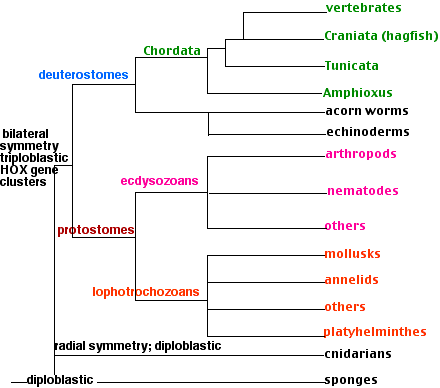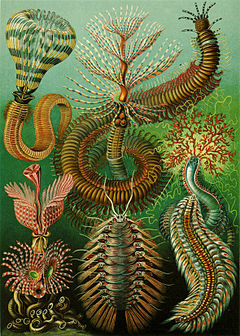Topic invertebrate characteristics: Delve into the diverse and extraordinary realm of invertebrates, where spineless creatures showcase a world of remarkable characteristics and adaptations, igniting curiosity and wonder in the natural world.
Table of Content
- What are the characteristics of invertebrates?
- Definition and Overview of Invertebrates
- Major Phyla of Invertebrates
- YOUTUBE: Invertebrates - Facts and Characteristics
- Diversity and Habitat of Invertebrates
- Physical Structure of Invertebrates
- Reproductive Strategies in Invertebrates
- Respiratory Systems in Invertebrates
- Nervous Systems and Sense Organs in Invertebrates
- Locomotion in Invertebrates
- Digestive Systems in Invertebrates
- Circulatory Systems in Invertebrates
- Excretory Mechanisms in Invertebrates
- Ecological Importance of Invertebrates
- Conservation and Threats to Invertebrate Species
What are the characteristics of invertebrates?
Invertebrates are animals that do not possess a vertebral column or backbone. They make up the majority of animal species on Earth and exhibit a wide range of characteristics. Here are some key characteristics of invertebrates:
- Absence of Vertebral Column: Unlike vertebrates, invertebrates lack a backbone. This absence of a vertebral column gives them a diverse range of body structures.
- Diversity: Invertebrates encompass a vast array of species, including insects, spiders, worms, jellyfish, mollusks, and many more. This incredible diversity is due to their adaptation to various habitats and ecological niches.
- Body Symmetry: Invertebrates can exhibit different types of body symmetry, such as bilateral symmetry (having a left and right side that are mirror images) or radial symmetry (body parts arranged around a central axis).
- Exoskeleton or Hydrostatic Skeleton: Many invertebrates have an exoskeleton, which is a tough outer covering that provides structural support and protection. Some invertebrates, such as worms, rely on a hydrostatic skeleton, which uses fluid pressure to maintain body shape.
- Multicellularity: Invertebrates are multicellular organisms, composed of multiple specialized cells working together to perform various functions within their bodies.
- Invertebrate Nervous System: Invertebrates have a nervous system that coordinates their bodily functions. The complexity of the nervous system varies across different invertebrate groups.
- Reproduction and Development: Invertebrates exhibit diverse reproductive strategies, including sexual reproduction, asexual reproduction, or both. They also undergo various developmental processes, such as metamorphosis or direct development.
- Ecological Importance: Invertebrates play crucial roles in ecosystems as pollinators, decomposers, predators, prey, and nutrient recyclers. They contribute significantly to maintaining ecological balance.
These characteristics illustrate the fascinating diversity and adaptations found within the world of invertebrates.
READ MORE:
Definition and Overview of Invertebrates
Invertebrates, encompassing a vast array of species, are animals that lack a vertebral column, or backbone. This diverse group represents the majority of animal species on Earth, showcasing an incredible array of forms, functions, and habitats.
- Invertebrates include phyla such as Arthropoda, Mollusca, Annelida, Echinodermata, and many others, each with unique characteristics.
- They vary in size from microscopic organisms to larger species like the giant squid.
- These creatures are found in nearly every environment on Earth, from deep oceans to the highest mountains.
Invertebrates play crucial roles in ecosystems, such as pollination, decomposition, and as key members of food chains. Their study offers insights into biodiversity, ecology, and even human biology.
- The study of invertebrates includes understanding their anatomy, which lacks the internal skeletal support of vertebrates.
- Reproduction among invertebrates can be incredibly varied, including both sexual and asexual methods.
- Many invertebrates have specialized systems for feeding, respiration, and movement, adapted to their specific environments.
This section will explore these remarkable creatures, shedding light on their intricate lives and the pivotal roles they play in our world.
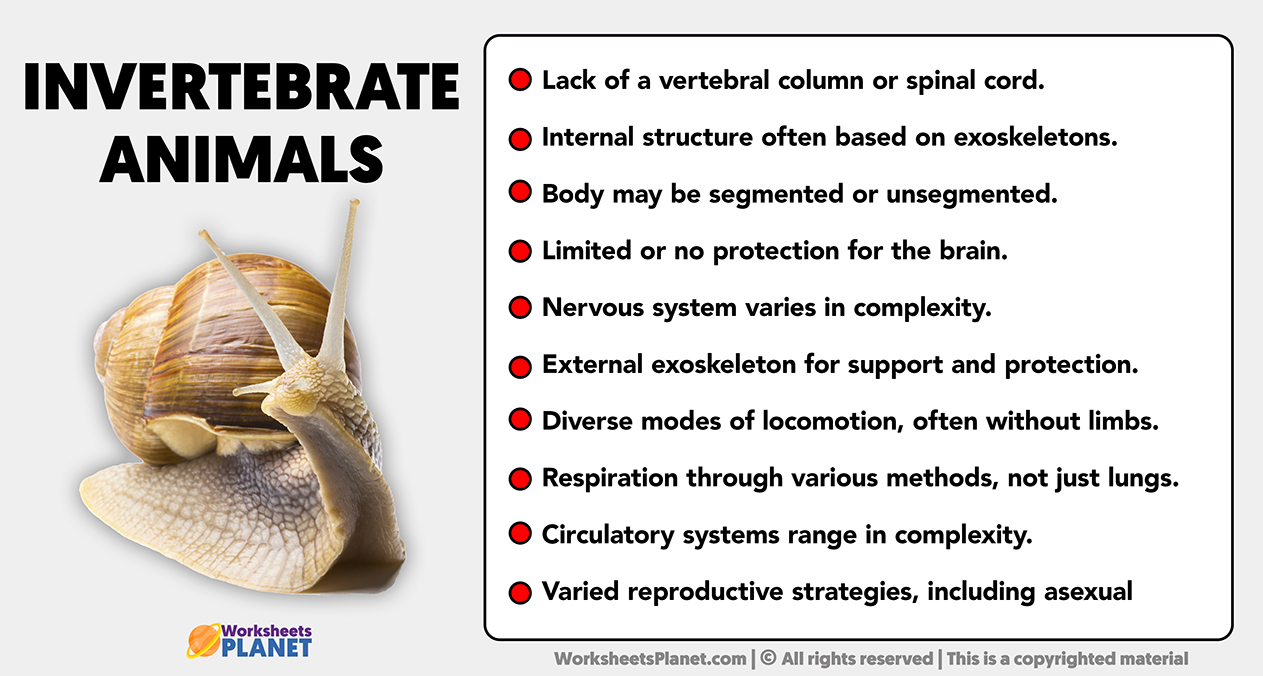
Major Phyla of Invertebrates
Invertebrates, encompassing over 90% of all species on Earth, display a breathtaking diversity in forms and functions. Without a backbone, their structures range from simple to complex, adapting to various environments.
Phylum Arthropoda
Arthropods, forming the largest phylum, boast an external exoskeleton, segmented body, and jointed appendages. This group includes insects, arachnids, myriapods, and crustaceans.
Phylum Mollusca
Mollusks, distinguished by a soft body and often a calcium carbonate shell, include snails, clams, octopi, and squids. They display a range of adaptations from terrestrial to deep-sea environments.
Phylum Annelida
Annelids, or segmented worms, include earthworms and leeches. Their segmented bodies enhance mobility and organ function, playing crucial roles in ecosystems, particularly in soil health.
Phylum Echinodermata
Echinoderms, such as starfish and sea urchins, are characterized by radial symmetry and a water vascular system. They primarily inhabit marine environments.
Phylum Cnidaria
Cnidarians, including jellyfish, corals, and sea anemones, are known for their stinging cells. They exhibit radial symmetry and can be found in both freshwater and marine habitats.
Phylum Porifera
Porifera, commonly known as sponges, lack true tissues and organs. They are filter feeders, playing a significant role in aquatic ecosystems.
Phylum Platyhelminthes
Platyhelminthes, or flatworms, exhibit a simple, flattened body structure and include both free-living and parasitic species.
Phylum Nematoda
Nematodes, or roundworms, are abundant in various environments. They play essential roles in nutrient cycling and can also be parasitic.
Invertebrates - Facts and Characteristics
Invertebrates are truly fascinating creatures! Did you know that they make up over 95% of all animal species on Earth? Get ready to delve deep into the world of invertebrates and discover their incredible diversity and unique adaptations in this captivating video.
What Are Invertebrates? Learn the characteristics of invertebrate animals Lesson Boosters
What makes each living organism special? It\'s their unique characteristics! In this intriguing video, unravel the secrets behind the diverse traits and features that define different species. From camouflage to super senses, prepare to be amazed by the wonders of nature\'s incredible creations.
Diversity and Habitat of Invertebrates
Invertebrates, constituting about 97% of all animal species, are incredibly diverse and inhabit a wide range of environments. From the smallest rotifers to the colossal squid, invertebrates are found in almost every habitat on Earth.
Habitats of Invertebrates
- Marine Environments: Many invertebrates, such as sponges, jellyfish, and mollusks, are predominantly found in oceans, ranging from shallow waters to the deepest parts of the sea.
- Freshwater Ecosystems: Freshwater habitats, including rivers, lakes, and streams, are home to various invertebrates like certain species of worms and crustaceans.
- Terrestrial Habitats: A vast array of invertebrates, including insects, spiders, and land snails, inhabit terrestrial ecosystems from deserts to rainforests.
- Extreme Environments: Some invertebrates have adapted to extreme conditions, such as the high reaches of the atmosphere, the frozen Antarctic, and under deep ocean beds.
Diversity of Invertebrates
Invertebrates display a remarkable variety in size, form, and behavior. This diversity is evident in their wide range of physical and biological characteristics.
- Size: Invertebrates vary significantly in size, from microscopic organisms like amoebas to the giant squid, which can grow up to 9-10 meters.
- Body Structure: The body plans of invertebrates range from simple, as in sponges, to more complex structures like those of arthropods and mollusks.
- Feeding Habits: Invertebrates exhibit various feeding strategies, including filter feeding, predation, and parasitism.
- Reproductive Strategies: Reproductive modes in invertebrates include both sexual and asexual methods, showcasing their adaptability.
- Social Behavior: Many invertebrates, especially insects like bees and ants, exhibit complex social behaviors and interactions.
Their presence in almost every ecosystem and their numerous interactions with their environments highlight the ecological significance of invertebrates.
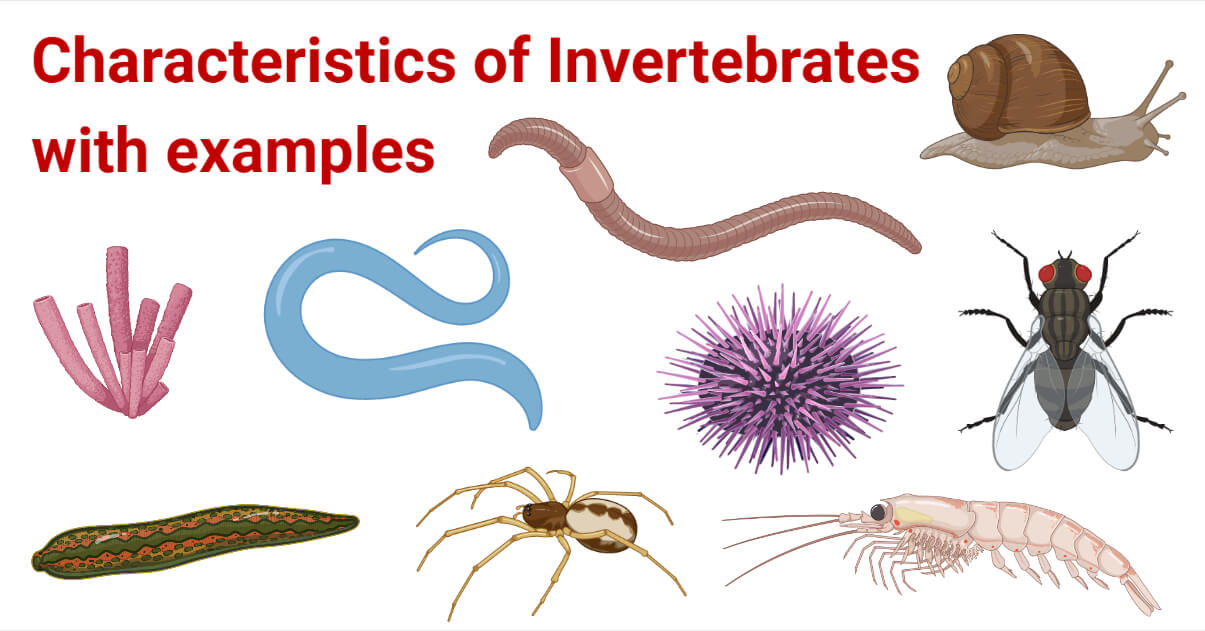
Physical Structure of Invertebrates
Invertebrates, making up an estimated 97% of animal species, exhibit a fascinating array of physical structures, adapted to their diverse lifestyles and environments.
Body Plans and Structures
- Cellular Level: The simplest invertebrates, like amoebas, exist at the cellular level, with structures like pseudopodia for movement and feeding.
- Porifera: Sponges, under the phylum Porifera, lack true tissues and organs, relying on a porous body for water flow and feeding.
- Cnidaria: This group, including jellyfish and corals, features two body plans - polyp or medusa - and specialized cells called cnidocytes for capturing prey.
- Platyhelminthes: Flatworms, characterized by their flattened, acoelomate bodies, lack complex circulatory and respiratory systems.
- Arthropoda: This largest phylum includes insects and spiders with exoskeletons and jointed appendages, showcasing great diversity in form and function.
- Mollusca: Mollusks have a muscular foot for movement and, in many species, a mantle for protection or housing a shell.
- Echinodermata: Starfish and sea cucumbers in this phylum possess unique features like tube feet for movement and respiration.
- Annelida: Segmented worms, such as earthworms, display a segmented body plan, allowing for greater mobility and organ specialization.
- Nematoda: Roundworms have a simple, cylindrical body, often parasitic, adapting to diverse environments.
Adaptations and Functions
Invertebrates exhibit various adaptations, such as arachnids with simple eyes and specialized feeding mechanisms, to thrive in their specific niches.
- Sensory Organs: Range from simple sensory cells in protozoans to complex structures like compound eyes in arthropods.
- Respiratory Systems: Vary from direct diffusion in simpler invertebrates to specialized structures like tracheal systems in insects.
- Excretory Mechanisms: Include adaptations like flame cells in flatworms and nephridia in annelids and molluscs.
- Reproductive Strategies: Encompass a variety from simple asexual reproduction to complex sexual cycles in different species.
- Locomotion: Invertebrates display diverse locomotive strategies ranging from swimming cilia in ctenophores to the walking and flying of arthropods.
These diverse structures and adaptations underline the incredible variety in the invertebrate world, each tailored for survival in specific habitats and ecological roles.
Reproductive Strategies in Invertebrates
Invertebrates, which constitute the majority of animal species, exhibit a wide range of reproductive strategies, reflecting their diversity and adaptability to different environments.
Asexual Reproduction
- Binary Fission: Common in simpler organisms like amoebas, where the parent organism divides into two equal parts.
- Budding: Seen in organisms such as sponges and some cnidarians, where new individuals grow out of the body of the parent.
- Parthenogenesis: A form of reproduction without fertilization, observed in some rotifers and bee species.
Sexual Reproduction
Sexual reproduction is widespread among invertebrates and can be quite complex, involving various structures and strategies.
- Internal vs. External Fertilization: Some species like certain annelids and crustaceans utilize internal fertilization, while others like many echinoderms and coelenterates use external fertilization in aquatic environments.
- Hermaphroditism: Certain invertebrates, such as some species of annelids and mollusks, have both male and female reproductive organs.
- Direct vs. Indirect Development: Invertebrates may have direct development, where the offspring resembles the adult, or indirect development involving larval stages, as seen in many marine invertebrates.
- Complex Life Cycles: Some species, particularly parasitic ones, have intricate life cycles involving multiple hosts and developmental stages.
These reproductive strategies contribute to the success and wide distribution of invertebrates across various ecosystems.

Respiratory Systems in Invertebrates
Invertebrates display a remarkable array of respiratory systems, adapted to their diverse lifestyles and environments. From simple diffusion to complex gill and tracheal systems, these organisms have evolved various methods to exchange gases with their surroundings.
Types of Respiratory Systems in Invertebrates
- Direct Diffusion: Simpler invertebrates like protozoans, sponges, and coelenterates respire directly through their body surfaces.
- Moist Skin: Annelids like earthworms exchange gases through their moist skin, a method efficient in their terrestrial habitats.
- Gills: Aquatic invertebrates, such as mollusks and some annelids, use gills to extract oxygen from water.
- Tracheal Systems: Insects have a complex tracheal system of air tubes that deliver oxygen directly to tissues and cells.
- Tube Feet and Branchiae: Echinoderms, including starfish and sea urchins, utilize tube feet and branchiae for respiration.
Each of these respiratory mechanisms is intricately adapted to the invertebrate"s habitat, size, and lifestyle, ensuring efficient gas exchange essential for their survival.
Nervous Systems and Sense Organs in Invertebrates
Invertebrates exhibit a wide variety of nervous systems and sensory organs, adapted to their diverse ecological niches and ways of life. From simple nerve nets to complex structures, these systems are crucial for their survival and interaction with the environment.
Nervous Systems in Invertebrates
- Simpler Systems: Invertebrates like sponges have basic nerve nets, which are networks of nerves that can sense touch.
- Complex Systems: Higher invertebrates, such as arthropods, have more advanced nervous systems, including a pair of nerve cords running along the body and head ganglia that form the brain.
- Variation in Structure: The structure of the nervous system varies greatly across invertebrate groups, reflecting their different lifestyles and habitats.
Sense Organs in Invertebrates
Invertebrates possess a range of sense organs that allow them to detect and respond to various stimuli in their environments.
- Protozoans: Use protoplasts as receptors and eyespots for light detection.
- Coelenterates: Equipped with long sensory cells for environmental sensing.
- Arthropods: Possess advanced sense organs like compound eyes and statocysts for equilibrium.
- Chemoreceptors: Found in various invertebrates, these receptors detect chemical signals in the environment.
The diversity in the nervous systems and sensory organs of invertebrates highlights their evolutionary adaptability and complexity, enabling them to thrive in a wide range of ecological conditions.
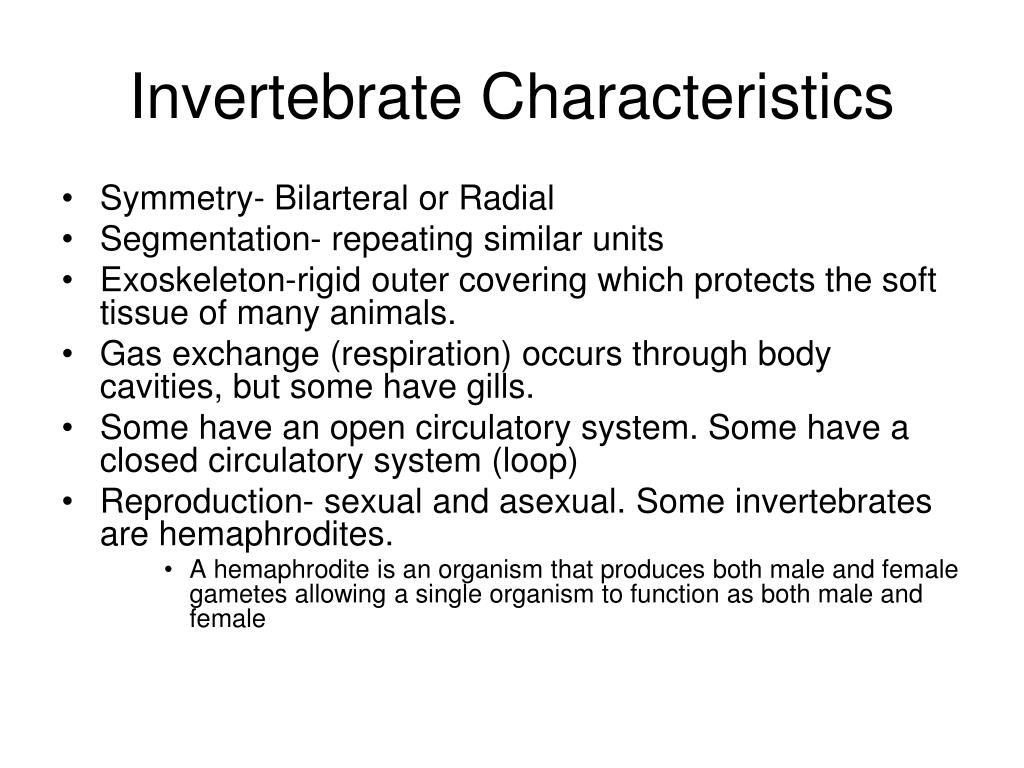
Locomotion in Invertebrates
Invertebrates demonstrate a diverse range of locomotion methods, reflective of their varied habitats and body structures. From simple movements in water to complex terrestrial navigation, invertebrates exhibit remarkable locomotive adaptations.
Varieties of Locomotive Methods
- Passive Movement: Some invertebrates, like jellyfish, are carried along by water currents, having limited control over their direction.
- Muscle Contractions: Invertebrates such as roundworms move by contracting muscles independently of external forces, allowing them to move forward and change direction as needed.
- Specialized Appendages: Arthropods, including insects and spiders, utilize jointed legs for walking, climbing, or even flying, showcasing advanced mobility.
- Pseudopodia, Cilia, and Flagella: Protozoans use these structures for movement, with pseudopodia for crawling, and cilia and flagella for swimming.
- Tentacular Movements: Certain molluscs and coelenterates move using tentacle-like structures.
- Setae and Parapodia: Annelids move using bristle-like structures (setae) and paired appendages (parapodia) for crawling.
- Arms: Echinoderms, such as starfish, use their arms for locomotion.
These locomotive methods reflect the invertebrates" adaptations to their specific environmental conditions and evolutionary histories.
Digestive Systems in Invertebrates
Invertebrates, which form the vast majority of animal species, possess a range of digestive systems that reflect their ecological diversity and evolutionary complexity.
Types of Digestive Systems
- Incomplete Digestive System: Characterized by a single opening serving as both mouth and anus, this system is found in simpler invertebrates like jellyfish.
- Complete Digestive System: Consisting of a digestive tract with two separate openings for the mouth and anus, this system is seen in more complex invertebrates such as roundworms.
Variation in Digestive Processes
Invertebrates exhibit various forms of digestion, ranging from intracellular to extracellular processes.
- Intracellular Digestion: Occurs within cells, typical in simpler organisms like protozoans and sponges.
- Extracellular Digestion: Happens outside the cells, common in more complex invertebrates.
- Combination of Both: Some invertebrates, such as coelenterates, use both intracellular and extracellular digestion methods.
The diversity of these digestive systems and processes underlines the adaptability of invertebrates to various environmental conditions and their evolutionary success.

Circulatory Systems in Invertebrates
Invertebrates exhibit a variety of circulatory systems, ranging from simple to complex, reflecting their diverse evolutionary paths and anatomical differences. The simplest invertebrates, like sponges and rotifers, do not possess a circulatory system, relying instead on diffusion for the exchange of nutrients, gases, and wastes. This process is facilitated by their minimal cell layers, allowing direct interaction with their environment.
In contrast, more complex invertebrates have evolved sophisticated circulatory mechanisms. Arthropods and most mollusks, for example, utilize an open circulatory system. In this system, a heart or similar pumping organ propels hemolymph - a fluid analogous to blood - through the body cavity or hemocoel. This fluid directly bathes organs and tissues, facilitating exchange of nutrients and gases. The movement of hemolymph is influenced by the heart"s contractions and the animal"s movements.
On the other hand, some invertebrates, such as annelids and a few other groups, feature a closed circulatory system. This advanced system comprises a network of vessels, including arteries, veins, and capillaries, which transport blood throughout the body. The blood in a closed system remains separate from the interstitial fluid, ensuring efficient delivery of nutrients and oxygen to tissues and organs. The closed system"s heart functions as a powerful pump, maintaining a continuous flow of blood.
Interestingly, the type of circulatory system in invertebrates is closely linked to their lifestyle and habitat. Active invertebrates, like squids, have developed closed systems to support their high metabolic demands. Conversely, invertebrates with less active lifestyles, such as certain mollusks and arthropods, benefit from the energy efficiency of an open circulatory system.
The study of invertebrate circulatory systems offers fascinating insights into the evolutionary adaptations that enable these diverse creatures to thrive in various environments. From the simple diffusion in sponges to the sophisticated closed systems in annelids, these systems reflect the intricate balance between form, function, and ecological niche.
Excretory Mechanisms in Invertebrates
Invertebrates employ diverse excretory mechanisms, reflecting their varied habitats and evolutionary histories. Aquatic invertebrates primarily excrete ammonia directly through diffusion, while terrestrial invertebrates typically convert ammonia into uric acid. This adaptation is vital for maintaining the appropriate composition of body fluids.
Some simpler invertebrates, like echinoderms, cnidarians, and sponges, lack distinct excretory organs. They rely on diffusion to excrete nitrogenous wastes as ammonia. Their aquatic environment facilitates this process.
In contrast, more complex invertebrates have developed specific excretory structures:
- Contractile Vacuoles: Found in microorganisms, these structures expel wastes and excess water from the cell, maintaining osmotic balance.
- Flame Cells and Nephridia: Present in organisms like planaria and worms, these cells filter and excrete wastes while maintaining fluid balance in the body.
- Malpighian Tubules: Insects use these tubules for waste excretion and osmoregulation. They actively secrete potassium into the tubule lumen, drawing water and waste products along with it.
- Nephridia in Earthworms: These structures collect fluid from the coelom and modify its composition, ultimately excreting diluted urine.
- Renal Glands in Mollusks: These glands play a key role in excretion in mollusks, filtering waste from the body fluids and expelling it.
- Coxal Glands in Aquatic Arthropods: These glands, typically found in pairs, filter waste from the blood and release it into the external environment.
These excretory mechanisms are essential for invertebrates to maintain their internal environment, crucial for their survival and function in diverse habitats.
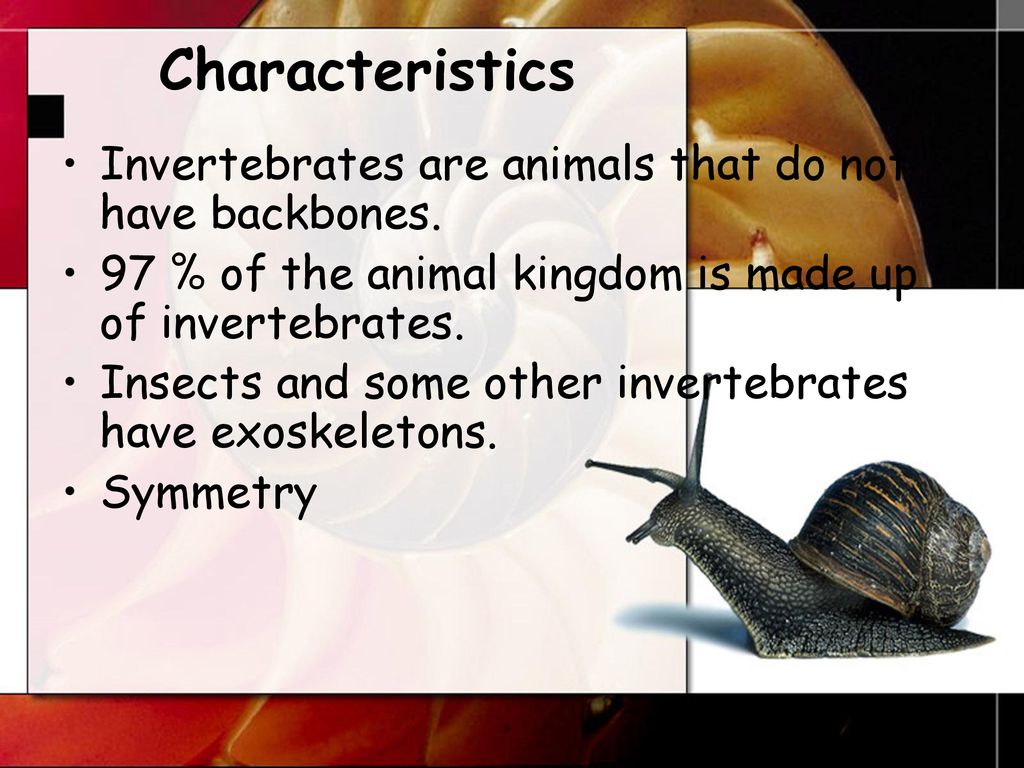
Ecological Importance of Invertebrates
Invertebrates play an indispensable role in maintaining ecological balance. These organisms, which include a diverse array of species like insects, worms, and mollusks, contribute significantly to various environmental processes.
- Pollination: Many invertebrates, especially bees and butterflies, are crucial for the pollination of flowering plants. This process is vital for plant reproduction, biodiversity, and the production of fruits and seeds.
- Decomposition and Nutrient Cycling: Invertebrates such as earthworms and beetles are key players in decomposition. They break down organic matter, contributing to nutrient cycling and soil fertility, which is essential for plant growth.
- Food Chain: Invertebrates serve as a primary food source for various animals, including birds and amphibians, thereby playing a critical role in food webs.
- Habitat Engineering: Some invertebrates engage in activities like burrowing, which enhances the ecosystem"s structure and function.
Beyond their ecological roles, invertebrates also have significant economic value. They are essential in agriculture for pollination and pest control, and some species are used in medical research due to their unique physiological traits.
In addition, invertebrates hold cultural significance in many societies, symbolizing various concepts and playing roles in traditional practices. Their conservation is crucial due to their vulnerability to habitat loss and environmental changes.
The staggering diversity of invertebrates, including millions of insect species, underlines the importance of understanding and conserving these organisms to maintain the health and stability of ecosystems worldwide.
READ MORE:
Conservation and Threats to Invertebrate Species
Invertebrates, which represent a significant portion of global biodiversity, are facing numerous threats that challenge their survival and necessitate conservation efforts.
- Habitat Loss: The destruction and fragmentation of natural habitats due to human activities such as urbanization, agriculture, and deforestation are major threats to invertebrate species.
- Pollution: Pollution, including chemical, sedimentation, and nutrient pollution, has been identified as a critical threat to invertebrates, particularly affecting species like mollusks. Efforts to reduce pollution through legislation such as the U.S. Clean Air Act and Clean Water Act have shown some success in mitigating these threats.
- Climate Change: Climate change impacts, including temperature shifts and extreme weather events, pose significant risks to invertebrate populations, altering their habitats and life cycles.
- Overexploitation: Certain invertebrate species are overexploited for commercial, recreational, or subsistence purposes, leading to population declines.
- Invasive Species: The introduction of invasive species can disrupt local ecosystems and compete with, predate on, or bring diseases to native invertebrate species.
Conservation efforts for invertebrates are crucial for maintaining biodiversity and the ecological roles these species play. Such efforts include habitat protection and restoration, pollution control, addressing climate change impacts, and implementing sustainable practices to reduce overexploitation. Public awareness and education are also vital in promoting the conservation of invertebrate species and their habitats.
Understanding and addressing these challenges are essential for preserving the diverse and vital invertebrate species that contribute so much to our planet"s ecological balance.
Explore the fascinating world of invertebrates, where diversity meets complexity. Dive into their unique characteristics, ecological roles, and conservation challenges, and discover why these small but mighty creatures are essential to our planet"s health and biodiversity.

:max_bytes(150000):strip_icc()/tunicates-5c86a0cdc9e77c00010c2253.jpg)


